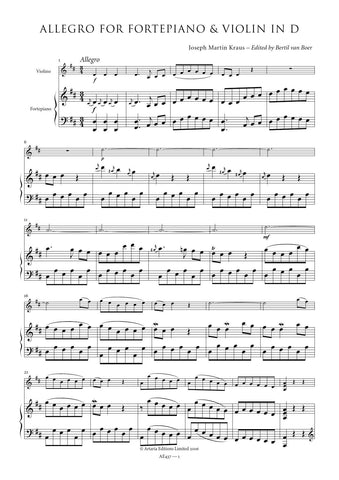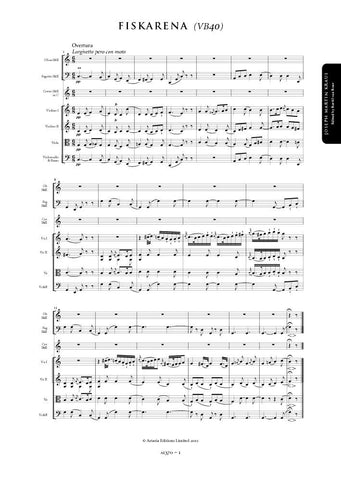Description |
Kraus, Joseph Martin (1756-1792)
|
||||||||||||||||||
Audio sample |
|||||||||||||||||||
Details |
Described by scholars as a symphony, a sinfonia concertante, and even a violin concerto, the Sinfonia in C with the obbligato violin was most likely written in Stockholm about 1778-1779, based upon handwriting and watermark evidence. It represents one of Kraus's first compositions after settling in Sweden. The purpose for which it was written remains unknown, and indeed it is not entirely certain if the work was ever performed during the composer's lifetime. The sole surviving source is the autograph preserved in the Universitetsbibliotek at Uppsala University. This was acquired by Kraus biographer Fredrik Samuel Silverstolpe sometime after 1825 from the Stockholm antiquarian book market. On the final page is a note penned by Silverstolpe giving the themes and fate of the Symphony in D major (VB 143), which was published during the composer's lifetime in Paris and London with an attribution to Joseph Haydn. It is clear from the context of the work, Kraus's first with a slow introduction, that it does not conform well to the standard notion of a true symphony. The solo violin has extensive passages that go beyond the usual obbligato parts found in other contemporaneous symphonies, yet the work does not have the form or structure of a concerto. In addition, there are passages for solo flute and violoncello, as well as a couple of brief appearances for the violas, that add a further dimension to the symphony. It may well be that this work might be either a reworking or contain material from a now lost Sinfonia concertante for obbligato flute, violin, viola, violoncello and orchestra that was written in 1777 in Gttingen. Kraus's autograph score presents few problems to the editor beyond the usual task of ironing out inconsistencies. Thus, the style and notation of articulation and dynamic markings have been standardized throughout and, where missing from the source, markings have been reconstructed from parallel passages. These are indicated by the use of dotted slurs or brackets where appropriate. Obvious wrong notes have been corrected without comment; editorial emendations with no authority from the source are placed within brackets. Bertil van Boer Allan Badley |
||||||||||||||||||
Performance |
30 September 2009 Conductor: Gerd Schaller Münchner Rundfunkorchester Kloster Ebrach, Kaisersaal - Ebrach - Germany | ||||||||||||||||||
Score Preview (best viewed in full screen mode) |
|||||||||||||||||||
Once again, postal service to the USA is disrupted. Click for details close
Loading...
Error















